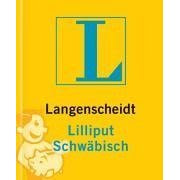simsa lo'e birkoku lo ni ce'u cmalu : Apricot-sized
 ni'o mi ze'a lo nanca be li so'o cu snesmi pacna lo nu mi ba ponse jajgau loi nalgli je suzrelbau vlafanvycku i na pu ja ca zasti fa lo tcini be lo nu mi kakne lo nu terve'u vy kei noi nalseltcu i ku'i su'a lo nu lo selpa'a be da cu binxo lo zasti cu cumki i ja nai bo lo nu da djica sy cu carmi la'u li pi rau ni'o mi ze'a lo nanca be li so'o cu snesmi pacna lo nu mi ba ponse jajgau loi nalgli je suzrelbau vlafanvycku i na pu ja ca zasti fa lo tcini be lo nu mi kakne lo nu terve'u vy kei noi nalseltcu i ku'i su'a lo nu lo selpa'a be da cu binxo lo zasti cu cumki i ja nai bo lo nu da djica sy cu carmi la'u li pi rauni'o lo bi'u nai selpa'a be mi gau la poi pendo mi keit cu ca zasti i ta'i bo ky fi mi dunda bevri la'o dy Lilliput Schwäbisch dy pe la'o dy Langenscheidt dy i lo se go'i cu vlafanvycku bau lo do'orbau e lo bangrcuaba gi'e simsa lo'e birkoku lo ni ce'u cmalu ni'o lo bangrcuaba e lo drata cu klesi lo bangrlalamana noi stici kaurdo'o i lo bangrcuaba cu co'e bu'u je vi la ctudgart | For some years I have dreamed of collecting non-English bilingual/multilingual dictionaries. I have not yet been in a position to spend money so frivolously. But dreams can come true, if you wish hard enough. My friend Kate has made my dream come true, by bringing me Langenscheidt's Lilliput Schwäbisch. It's a Swabian-German/ German-Swabian dictionary, about the size of an apricot. Swabian is a dialect of the West Germanic Alemannic language and is spoken in and around Stuttgart. Links: Lilliput Schwäbisch at Amazon.de  Swabian at Ethnologue Swabian German at Wikipedia |
Labels: banske, linguistics



4 Comments:
I posted a comment here yesterday and it vanished!
If you need a dictionary to translate between German and Swabian, then why is Swabian considered a dialect and not a separate language? Or is the dictionary apricot-sized because there are only a few words that are different?
Maybe I just don't understand what constitutes a dialect. I gather that Mandarin and Cantonese are written the same way, and only pronounced differently. If this is true, then no Mandarin-Cantonese dictionary is required, I guess. And yet these are considered different languages, right?
Swabian is a dialect of Alemannic, not of Standard German. Alemannic includes four dialect groups: Swabian (Stuttgart), Low Alemannic (Alsace & Bern), High Alemannic (most of Switzerland), & Highest Alemannic (around the Matterhorn). One source says there is 40% mutual intelligibility with standard German. The line between language and dialect is hazy. Indeed, although the Swiss Germans all speak Alemannic, the varieties are so disparate that mutual intelligibility within Switzerland is limited. The differences between Alemannic and Standard German are mostly in vocabulary and pronunciation. The grammars are pretty close.
China is confusing because of the odd writing system. "Chinese" is a family of about seven or eight languages (each split up into dialects). There probably are Mandarin-Cantonese dictionaries, esp. in Hong Kong. Cantonese and Mandarin have different words and characters for "to be", for example. But limited literacy in China throughout its history means that most writing is formal and somewhat stylized and rooted in Classical Chinese, and so a newspaper e.g. is basically accessible to literate speakers of any of the languages. And of course the Mainland decrees that only Mandarin be used officially and in fact denies that the other languages are different.
Sorry about your vanished comment. I blame Google/Blogger!
So is the dictionary apricot-sized because of abridgement and fine print, or because there are only a few words that are different in German and Swabian?
It's partly about so many words being identical. Also, many idioms are probably identical, whereas idioms are defined in a German-English or German-Japanese dictionary. Also, the German-Swabian section is much smaller than the Swabian-German section, because it's geared toward German-speakers who visit Swabia and are curious about the unfamiliar words they hear. Also, it's a novelty item; they keep it small so people will buy it. The price printed on the back is EUR2.95.
Post a Comment
Subscribe to Post Comments [Atom]
<< Home